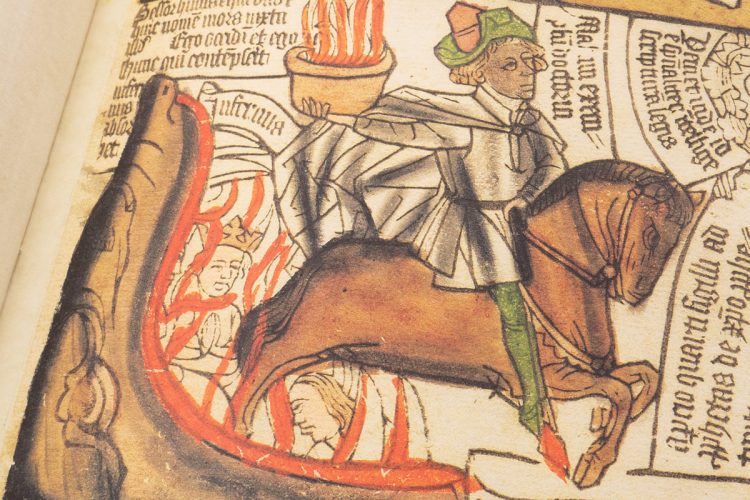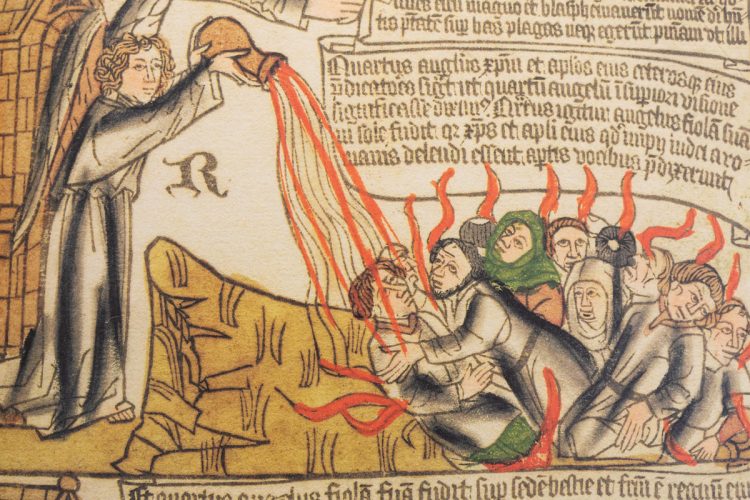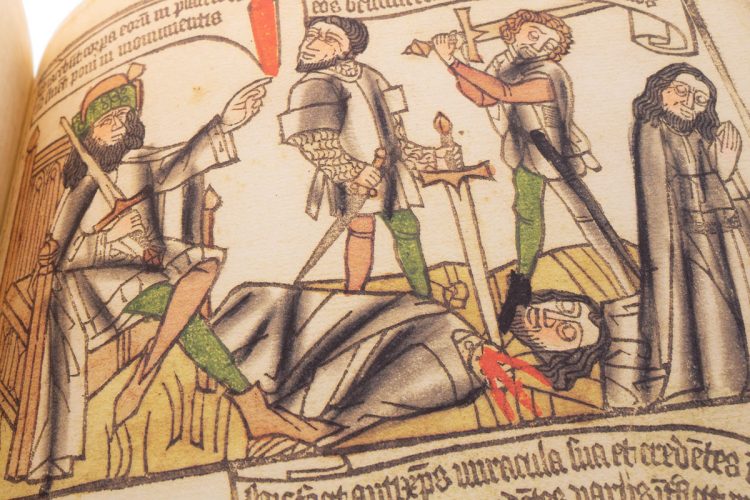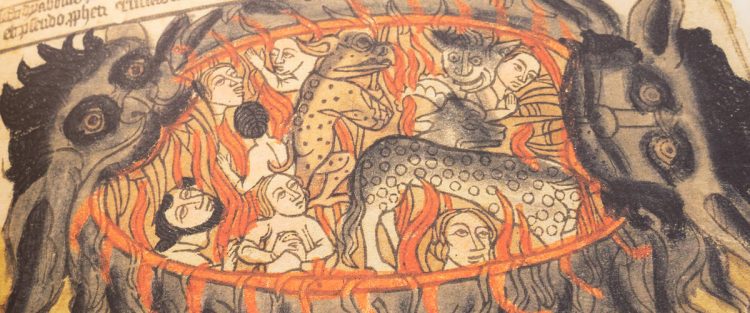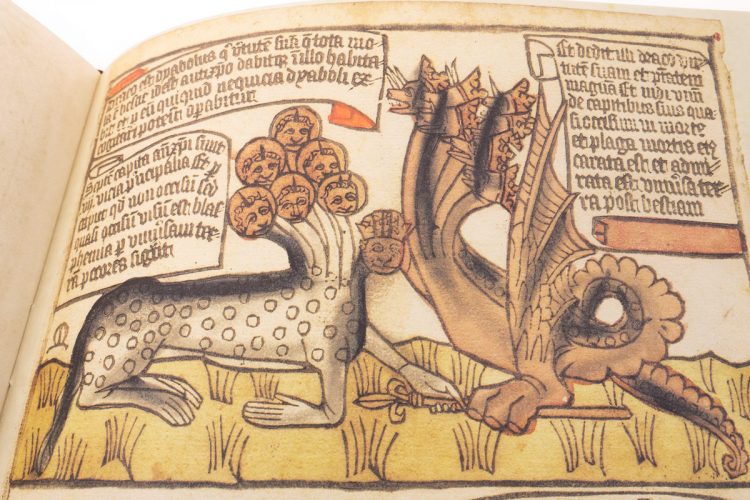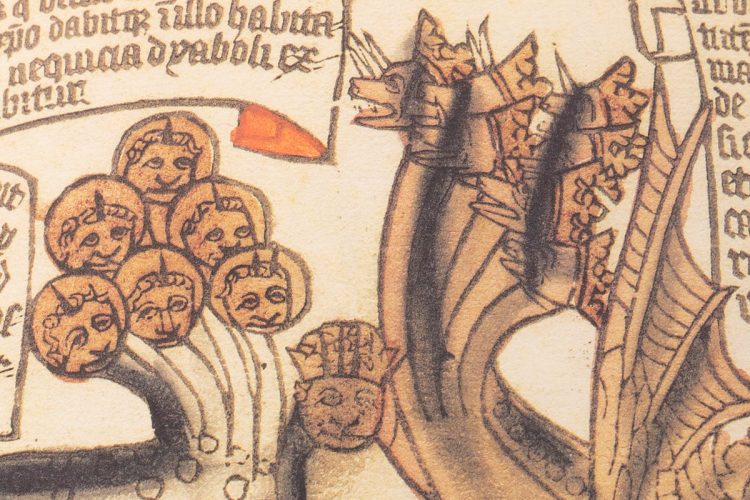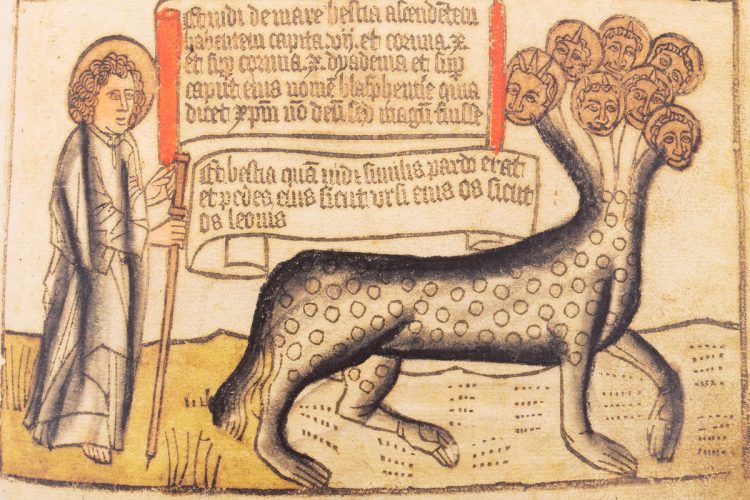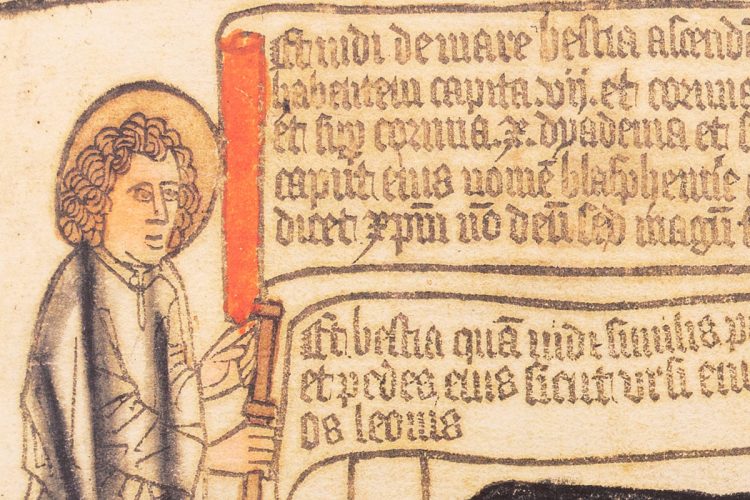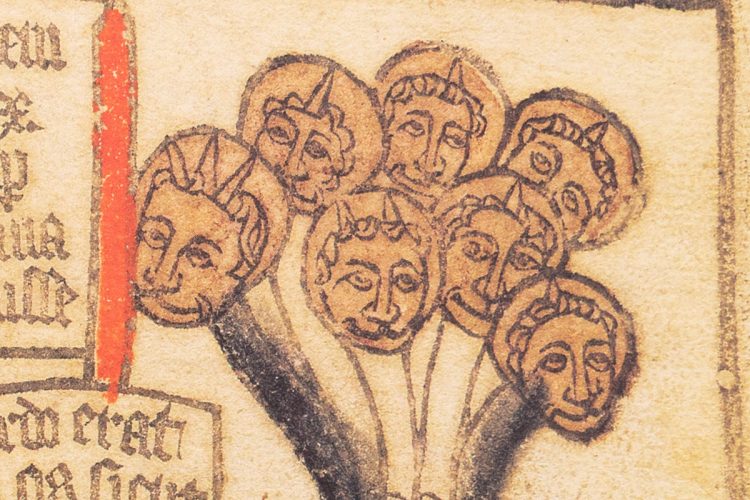The events described in the Book of Revelation cannot be compared to the adventures of Superman, but clerics at the end of the 1400s had surely found a way to make sacred Christian writings appealing to a very wide audience.
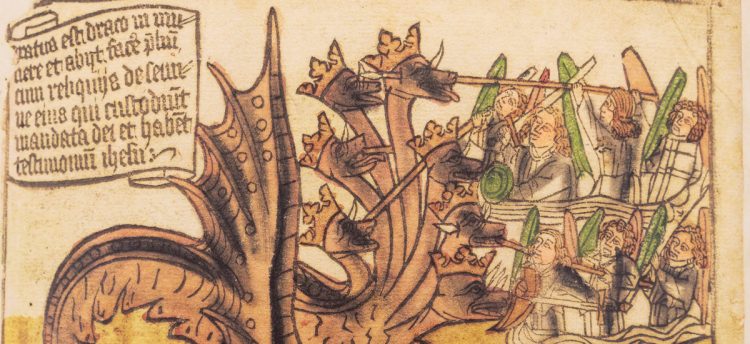
For centuries, the thrilling imagery of the Apocalypse has inspired authors and painters worldwide. The enthusiasm for the Apocalypse as a stimulus for artistic creation and as a means for preaching began after year 391, when Emperor Theodosius I established Christianity as the official state religion of the Roman Empire.
When printing technology improved in Europe around the middle of the 15th century, clerics were given a new tool to spread the Christian tradition even among the illiterate or semi-literate: the block book, also known as xylographic.
These short volumes were a cheaper and popular alternative to publications obtained through typesetting, which was still an expensive technique at the time.
Incunabula were a powerful means of conveying the Christian message through short captions and vivid images — clerics and preaching monks often used the texts as notes during sermons.
In the last decades of the 15th century, these enthralling Christian narratives were passed from hand to hand in taverns, cottages, and churches, which is why very few examples have survived until today.
One of the most stunning is the Apocalypsis Johannis, a unique codex printed in brown ink in the Dutch or Rhine region in 1460. To a modern eye, this publication almost resembles a comic book because of the way the captions are arranged within the images, and of the passion and turmoil in its illustrations.
Thanks to the commentary included in the facsimile edition by Il Bulino, we can dive into the tale of the Apocalypse and find out the meaning behind some of its most striking scenes.
Satan, the Beast, and the False Prophet Are Cast in the Lake of Fire
On page 43, a large image of hell is depicted as a fire pit emerging from the mouths of two monstrous animals armed with tremendous fangs. Inside the pit are the souls of the eternally damned, the beast, the seven-headed dragon, and the false prophet. (Revelation 10:10) The Latin text reads:
“And the devil who seduced them will be cast in a lake of fire and sulfur, in which both the beast and the false prophet shall be tormented for centuries.”
The Dragon Gives His Power to the Beast
The scene is set in a parched meadow with sparse tufts of grass, where the seven-headed dragon gives the scepter of power to the beast, who accepts it with its left paw. (Revelation 13:2) The captions, from left to right, read:
“The dragon is the beast that will give all his power, which corresponds to all evil, to the beast, namely to the Antichrist, so that it shall dwell inside it and make all sufferings come true.”
“The seven heads of the Antichrist represent the seven deadly sins and blasphemies.”
“The dragon gave its power and great authority to the beast. And I saw one of its heads almost wounded to death, and its deadly wound was healed, and the whole world followed the beast with admiration.”
The Seven-Headed Beast
John is standing on the left, leaning on the staff he holds in his right hand. He is observing the great beast rising from the sea (although it is depicted as if it were walking towards it), with spotted skin and seven horned heads each wearing a crown. The leopard, with its bear-like paws and lion’s mouth, is a symbol of cruelty, slyness,and strength. The sea, with its turbulence and instability, represents the people hostile to God and their eternal unrest. (Revelation 13:1-2)
The two captions, from top to bottom, read:
“And I saw a beast coming out of the sea. It had ten horns and seven heads, with ten crowns on its horns, and on each head a blasphemous name. It was like a leopard, with feet like the feet of a bear, and had a mouth like a lion.”
If you enjoyed this dive into 15th-century book printing, check out more facsimile editions of incunabula!


